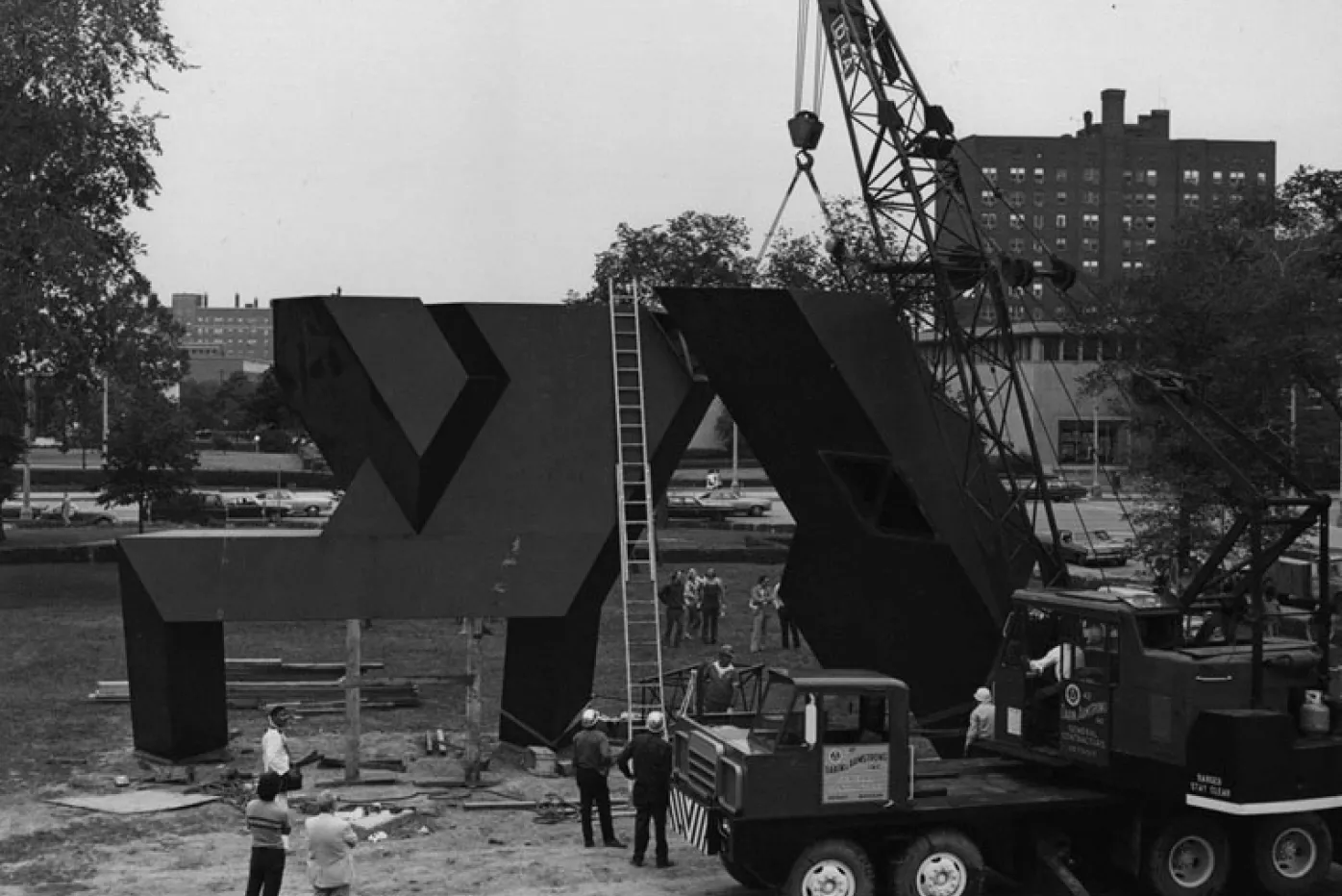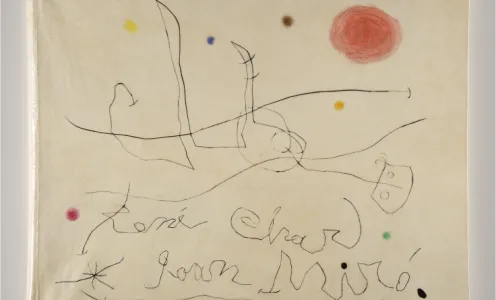The Gracehoper Conservation Project
Updated Jul 20, 2022
Gracehoper, Tony Smith's monumental, painted-steel sculpture on the DIA's North Lawn, has suffered from nearly 30 years of exposure to harsh weather and natural corrosion. Through consultation with the Tony Smith Estate, paint specialists, and expert conservators, the conservation team developed a plan that honors the artist's vision while using innovative advancements in paint technology.
Over the course of two months, conservators will prepare, prime, and paint all surfaces that will protect Gracehoper from the effects of weathering. The paint is projected to last 15 to 20 years, ensuring that Gracehoper will remain an icon for the DIA, the city of Detroit, and art lovers for generations to come.
Gracehoper stands 22.5 ft. tall, 23 ft. deep, and 46 ft. long. Weighing about 27 tons, the sculpture was constructed in six segments by the Industrial Welding Company of Newark, New Jersey. In 1972, each segment was assembled on site under the watchful eye of Smith. Constructed of bold modular forms based on multiples of tetrahedrons and octahedrons, the complex structure bridges the space between industrial fabrication and the natural environment. At the time, Gracehoper was the largest outdoor sculpture to be assembled in the United States and Smith considered it to be among his most successful.
Smith said, "I think of the Gracehoper as intimate rather than monumental. People have some sensuous connection with this work. They can move around it, walk under it, go through it."

Gracehoper, Tony Smith's monumental, painted-steel sculpture on the DIA's North Lawn, has suffered from nearly 30 years of exposure to harsh weather and natural corrosion. Through consultation with the Tony Smith Estate, paint specialists, and expert conservators, the conservation team developed a plan that honors the artist's vision while using innovative advancements in paint technology.
Over the course of two months, conservators will prepare, prime, and paint all surfaces that will protect Gracehoper from the effects of weathering. The paint is projected to last 15 to 20 years, ensuring that Gracehoper will remain an icon for the DIA, the city of Detroit, and art lovers for generations to come.
Gracehoper stands 22.5 ft. tall, 23 ft. deep, and 46 ft. long. Weighing about 27 tons, the sculpture was constructed in six segments by the Industrial Welding Company of Newark, New Jersey. In 1972, each segment was assembled on site under the watchful eye of Smith. Constructed of bold modular forms based on multiples of tetrahedrons and octahedrons, the complex structure bridges the space between industrial fabrication and the natural environment. At the time, Gracehoper was the largest outdoor sculpture to be assembled in the United States and Smith considered it to be among his most successful.
Smith said, "I think of the Gracehoper as intimate rather than monumental. People have some sensuous connection with this work. They can move around it, walk under it, go through it."


